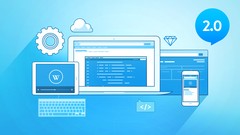1. Choose a Topic You Are Passionate About
Many bloggers focus their first blog on a topic that they have no interest in because they believe it will make them more money. This is a big mistake.
You need to be passionate about the subject your blog focuses on. If you launch a blog about something that you do not care about, you will lose interest very quickly and inevitably stop updating it. This is particularly true if you are writing the majority of the content for your blog.
Think about the websites and blogs that you read on a weekly basis. This will give you an indication of the topic you should focus on. For example, I could start a blog on MMA, mobile phones, gadgets, and traveling; as those are topics that I enjoy reading about myself. If I started a blog about shopping or ice hockey, I would lose interest in the blog quickly; even if I knew there was money to be made.
In short: Follow your passion
2. Think About Your Long Term Business Model
When a good idea strikes, it is tempting to buy a domain name, launch your blog, and start publishing articles. Though it pays to be patient.
You will have a better change of making your blog successful if you do a lot of research beforehand.
Ask yourself the following questions:
- Who are your competitors?
- How do your competitors make money?
- How will your blog make money?
- How long will it take you to monetize your blog?
- What will your blog do differently to stand out?
- What problems do you envision for your blog after launching?
Think about all of these issues before you launch your blog so that you do not face any unexpected problems.
3. Choose a Great Domain Name
Finding a good domain name can be a pain, however it is an essential part of branding your blog. COM remains the best domain name extension, but if you find a great domain that uses something different, it may be worth opting for that instead.
Domain name generators such as Panabee or Wordoid can be used to help you find a domain. Before you register a domain, check that the appropriate social media account usernames are available for your domain using a service such as KnowEm orBrandChecker.
Once you have decided on a suitable domain name, you should register it using a service such as NameCheap or Hover (GoDaddy is ok if you can handle their pushy sales tactics).
4. Choose a Reliable Blog Host
It is important to host your blog with a company that is reliable and offers fast response times. A cheap shared hosting account at $4.99 per month might be fine for the first few months, however you should upgrade to better hosting solution once you start getting traffic.
Check out Joyce’s WordPress Hosting Review for a comparison of dedicated WordPress hosting companies.
5. Use a Professional Design
Whether you like it or not, visitors will make a judgement about your blog within seconds of it loading. You only get one chance to make a good first impression; which is why it is so important to use a professional blog design.
I recommend using a clean design such as Divi. Be sure to include a search bar, a list of recent posts, and an archive page. This will help visitors find your content easily.
Try and avoid cluttering up your blog design with too many banners. While it may be worth adding banners later to help monetize your blog, in the beginning, your main aim is to establish a readership.
6. Speed Up Your Blog
A slow loading blog design will frustrate readers and increase the likelihood of them clicking the back button on their browser before your page even loads. It is therefore vital that you optimize your blog so that pages load quickly. Search engines also rank fast loading websites higher, therefore optimizing your blog design will help your blog gain more search engine traffic.
There are a number of ways in which you can speed up your blog:
- Choose a web host with fast response times
- Optimize your images
- Remove any WordPress plugins that affect performance
- Reduce the number of saved post revisions
- Use a caching plugin such as W3 Total Cache
- Use a Content Delivery Network
7. Optimize Your Blog for Search Engines
The core version of WordPress has some good SEO features such as the ability to use pretty permalinks and the option to change your article page slug; however you can optimize your blog further.
I recommend installing an SEO WordPress plugin such as WordPress SEO or All in One SEO Pack. Adding a sitemap will also help search engines index your content.
A large percentage of your traffic will come from search engines, so optimizing your blog for search engines should be made a priority.
8. Know Your Subject
You are going to be writing about one or two key topics on a weekly basis. It therefore pays to be knowledgable about what you are writing about. If you are blogging about something you are passionate about, you should already have knowledge about the topic, but do not assume that this means you are an expert.
To run a successful blog, you need to research your articles thoroughly and be able to support your viewpoint with facts and figures.
Therefore you should actively:
- Stay up to date with the latest news in your niche
- Subscribe to good blogs in your niche
- Read books about your topic
The long term goal is to become an authority on your subject and be the one who is leading the discussion.
9. Write Great Content
In 1996, Bill Gates famously published an article entitled “Content is King“. He rightly believed that, like television, the big money was in content.
Blogs live and die by their content. If you want to develop a successful blog, you will need to focus on publishing high quality content on a regular basis. It is therefore in your interest to improve your craft.
- Spend time improving your writing skills
- Proofread your articles to ensure that there are no grammatical errors or spelling mistakes
- Be honest in your writing and give your opinion on issues you feel strongly about
- Be original – Do not try and imitate someone else and attempt to be something you are not
- Learn from the best – Follow other bloggers and look at what they do well and adapt it into your own writing style
The key is to give value to readers. You can do this through reviews, tutorials, news, and views. If you can help a reader in some way, they will be grateful and more likely to subscribe to your future articles.
Be sure to maintain a high standard on your blog. If a post is not ready, do not publish it. It is always better to come back to an article the following day and work on it some more.
You should also spend time writing linkbait articles and in-depth featured articles. These articles will have a better chance of being shared by visitors and being linked from other blogs; which in turn will rank them high in search engines and generate more traffic to your blog.
10. Publish Articles on a Consistent Basis
Readers get used to the frequency in which you publish articles on your blog. It is therefore in your best interests to choose a posting frequency and stick to it.
A common mistake that beginners make is to publish too often when a blog is first launched. Their enthusiasm for their new blog gets the better of them and they post once or even twice per day. Ultimately, it can be difficult to maintain this posting frequency when you are also trying to promote your new blog. Posting frequency, and the quality of posts being published, are usually affected because of it.
Rather than publish articles every day for two weeks and then not publish any more articles for a few weeks, it is better to stick to a posting schedule that can be easily maintained in the future e.g. three times a week. If you find that you have too many articles scheduled for publication, you could increase posting frequency to four or five times a week.
Whether you publish once a day or once a week, I recommend sticking to the same posting frequency so that readers become accustomed to when more articles will be published.









